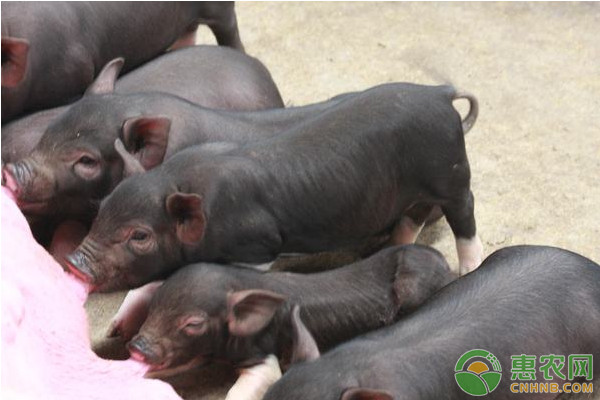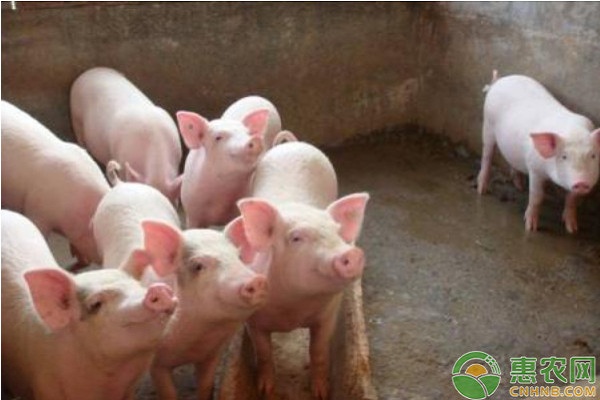I believe that no matter whether it is a farmer or an urban person, the words "African swine fever" should be completely familiar to you. Since the emergence of African swine fever in our country, everyone is heart-wrenching. Originally thought that only one area appeared, and one province was discovered after a while. So today we will take a look at the clinical symptoms and harms of African swine fever, how to deal with African swine fever. 1 The concept and route of transmission of African swine fever African swine fever, also known as African swine plague, warthog disease, is an acute, heat, and highly contagious disease caused by African swine fever virus (ASFV). All breeds and pigs of the age can be infected. Domestic pigs are highly susceptible, with morbidity and mortality rates up to 100%. The World Organisation for Animal Health (OIE) lists it as a statutory report on animal diseases, which is classified as a type of animal disease in China and is a key disease that is controlled and controlled. Since its discovery in Kenya in 1921, the disease has been found in sub-Saharan African countries. It was introduced to Europe in the 1960s, introduced to South America in the 1970s, introduced to the Caucasus and Russia in 2007, and covered in Russia in 2010. Popular, in March 2017, there were still several outbreaks in the Russian state of the Far East. In recent years, the disease has been prevalent mainly in Africa, Central and Eastern Europe and the Caucasus. The African swine fever virus is an important member of the African swine fever virus genus of the African swine fever family. Some of the characteristics of the virus are similar to the iridescent virus family and the poxvirus family. In pigs, the virus replicates in several types of cytoplasm (especially in reticuloendothelial cells and mononuclear macrophages) and can proliferate in blunt rims, making it the primary vector (Africa). There are several soft palate in the Spanish peninsula that are storage hosts and media for AS-FV. African swine fever virus can be divided into several antigenic types, which are highly resistant to the external environment. In the low temperature dark room, the virus in the blood can survive for 6 years, can survive for several weeks at room temperature, and can survive in the soil at 23 °C. In the day, it can survive for more than 2 weeks in the tropical pollution circle, and it must be deactivated for 3 months in the temperate pollution circle to lose contagiousness. The virus is extremely stable to acids and bases, sensitive to lipid solvents such as ether and chloroform, and many lipid solvents and disinfectants can destroy it. It is generally believed that the introduction of ASFV into disease-free areas is associated with unpasteurized infected pig products from international airports and ports. Sick, rehabilitation and concealed pigs are the main source of infection. Healthy pigs are mainly infected by contact with or infected with virus-contaminated articles, feed, and drinking water. They can also be transmitted through the air in short distances, leading to respiratory infections. The possibility of infection by media insects such as blunt-edge soft palate with pigs is also possible. . 2 Clinical symptoms and harms of African swine fever After the pig is infected with the disease, the incubation period is generally 15 days. The incubation period for direct contact infection is 5 to 19 days, and the incubation period for blunt-edge soft-bite infection is generally no more than 5 days. It is characterized by high fever, skin congestion, abortion of pregnant pigs and extensive bleeding of organs. The first episode of pigs has the characteristics of rapid spread, short course of disease and high mortality, which is very harmful to pig production. The disease has no obvious seasonality and can occur all year round. The incidence is usually between 40% and 85%, and the mortality varies depending on the strain of the infection. Among them, the mortality rate of virulent strains can reach 100%, and the mortality rate of moderately virulent strains is generally 30% to 50% (the mortality rate in adult pigs is between 20% and 40%, and 70% in young pigs). %~80%), low-virulence strains can only cause a small number of pigs to die. African swine fever can be divided into the most acute, subacute, and chronic types in clinical symptoms. The most acute ones often do not have clinical symptoms that suddenly die. Acute body temperature up to 42 ° C, showing mental depression, anorexia or no food, visible mucous membrane flushing, cyanosis, eye and nose with mucopurulent secretions; ears, limbs, abdomen and other parts of the skin appear purpura, and even bleeding points or bleeding Spot; vomiting, constipation, blood and mucus coverage on the surface of the feces, or diarrhea, blood in the stool; ataxia, gait stiffness, difficulty breathing, prolonged course of the disease, other neurological symptoms; pregnant sows can cause miscarriage. The course of disease is usually 1 to 7 days, and the mortality rate is as high as 100%. The clinical symptoms of subacute patients are the same as acute, but the symptoms are mild, the mortality rate is low, and the duration is long (about 21 days). The body temperature fluctuation is irregular (usually greater than 40.5 °C), and the mortality rate of piglets is relatively high. Chronic body temperature presents wavy heat, dull hair, weak body weight, skin ulcers, joint swelling, stunting, and respiratory and pneumonia symptoms. 3 Prevention and control of African swine fever At present, there are no effective therapeutic drugs and preventive vaccines for African swine fever. Therefore, the epidemic detection and quarantine supervision should be strengthened, and the protective measures such as closed management, disinfection and isolation should be strictly implemented, and internal and external prevention should be adhered to ensure that biosafety is the prevention and control of the disease. key. Once an outbreak is discovered, emergency measures such as blockade, isolation, culling, disinfection, and harmless treatment should be taken immediately to control the spread of the epidemic. Since the disease was introduced to Russia in 2007, the Ministry of Agriculture and Rural Affairs of China has successively issued the “Technical Regulations for the Prevention and Control of African Swine Fever (Trial)†and the “Emergency Plan for the African Swine Fever Epidemicâ€. If an epidemic occurs, the emergency plan should be immediately activated. All localities are required to be alert to the risk of the epidemic. It is strictly forbidden to transport pigs from the affected areas and do a good job in risk prevention. Disposal measures such as blockade, culling, harmless treatment, disinfection, etc. are prohibited, and all pigs and susceptible animals and products are prohibited from being transported into or out of the blockade. In accordance with the "Technical Guidelines for the Prevention and Control of African Swine Fever (Trial)", in order to prevent and control African swine fever and block the introduction of the epidemic, all border areas should strengthen prevention and control in the border areas, adhere to internal prevention and external plugging, and effectively implement border inspections and disinfection. Item prevention and control measures. According to the requirements, in the relevant counties and cities bordering the provinces and regions where the African swine fever epidemic occurred and is occurring, pig breeding is prohibited within 50 km of the border line; pig breeding is prohibited around the airport and port of the city where the international air and seaport are located; Imports of animal and animal products from African countries and regions are prohibited. Animal disease prevention and control institutions at all levels should strengthen daily monitoring, pay close attention to the epidemic situation at home and abroad, scientifically study the epidemic situation, and strengthen the monitoring of African swine fever. The forestry department should carry out investigation and monitoring of wild boar and vector insect soft palate in the border areas, and find out the basis to provide a basis for the risk assessment of African swine fever. Veterinary health supervision and quarantine institutions at all levels shall strengthen the quarantine supervision of the circulation, movement and cross-border transportation of live pigs and their products. It is strictly forbidden to transport live pigs and their products from infected areas, and strengthen the international navigation vehicles, international mail, and passengers entering and leaving the country. Quarantine, the destruction and treatment of pigs, wild pigs and their products in illegally affected areas. At the same time, we will do a good job in quarantine, slaughtering and quarantine and introduction and quarantine of pigs, so as to prevent the spread of the epidemic. In addition, it is necessary to strengthen the training of grassroots technical personnel, improve the diagnostic ability and level, especially to improve the differential diagnosis level of African swine fever and swine fever, and timely discover, report and dispose of suspected epidemics, and eliminate hidden dangers. For farm households, it is necessary to actively cooperate with local animal disease prevention and control institutions to carry out epidemic disease surveillance and investigation, especially the occurrence of piglet vaccination immune failure, suspected symptoms or unexplained death, and should be reported to the local veterinary department in time. At the same time, strengthen the management of feeding, establish and strictly implement the sanitation and disinfection system, and strictly control the entry of personnel, vehicles and susceptible animals into the farm. Personnel, vehicles and articles entering and leaving the farm and its production areas shall be isolated and disinfected. Keep pigs as close as possible to avoid contact with wild boar and blunt soft palate. It is strictly forbidden to use drowning or meal waste to feed pigs. Source: The article was reprinted from the headline number Jishan Huayao, and friends who like it can pay attention. Natural sweeteners refer to food additives that can sweeten soft drinks. They can be divided into natural sweeteners and synthetic sweeteners according to their sources. Natural Sweetener,Natural Sweetner Stevia Extract,Sucralose Sweetener,Non-Nutritive Strong Sweetener Allied Extracts Solutions , https://www.alliedadditives.com


Natural sweeteners are substitutes for sugar. Natural sweeteners considered to be generally safe include stevia, licorice, disodium glycyrrhizinate, tripotassium glycyrrhizinate and trisodium. Natural sweeteners have many uses in the home and in processed foods.
Natural non-nutritive sweeteners are increasingly paid attention to, is the development trend of sweeteners, WHO pointed out that diabetes patients have reached more than 50 million, more than a quarter of the American people require low-calorie food. In sucrose substitutes, the United States mainly uses aspartame, up to more than 90%, Japan mainly uses stevia glycoside, and Europeans are more interested in AK sugar (acesulfames). All three non-nutritive sweeteners are available in China.